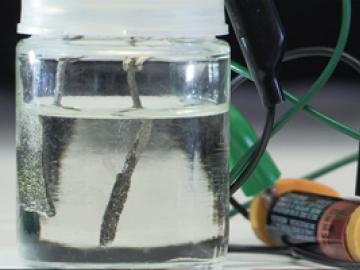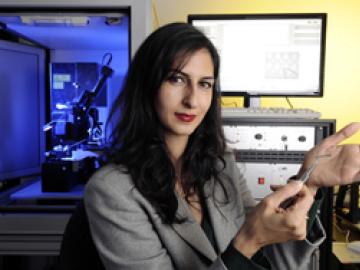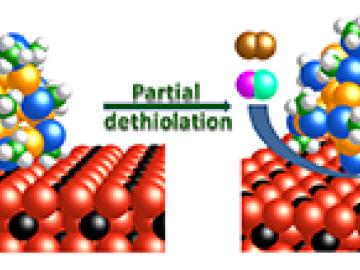Filter News
Area of Research
- (-) Materials Under Extremes (5)
- (-) National Security (3)
- Advanced Manufacturing (5)
- Biological Systems (4)
- Biology and Environment (4)
- Biology and Soft Matter (3)
- Building Technologies (3)
- Chemical and Engineering Materials (2)
- Chemistry and Physics at Interfaces (5)
- Clean Energy (58)
- Climate and Environmental Systems (5)
- Computational Biology (1)
- Computational Chemistry (4)
- Computational Engineering (1)
- Computer Science (3)
- Earth Sciences (1)
- Energy Frontier Research Centers (6)
- Fuel Cycle Science and Technology (1)
- Functional Materials for Energy (8)
- Fusion Energy (2)
- Geographic Information Science and Technology (1)
- Materials (62)
- Materials for Computing (7)
- Materials Synthesis from Atoms to Systems (8)
- Neutron Data Analysis and Visualization (2)
- Neutron Science (20)
- Nuclear Science and Technology (8)
- Nuclear Systems Technology (1)
- Quantum Condensed Matter (2)
- Quantum information Science (1)
- Renewable Energy (1)
- Sensors and Controls (1)
- Supercomputing (38)
- Transportation Systems (3)
Media Contacts

Oak Ridge National Laboratory will give college students the chance to practice cybersecurity skills in a real-world setting as a host of the Department of Energy’s fifth collegiate CyberForce Competition on Nov. 16. The event brings together student teams from across the country to compete at 10 of DOE’s national laboratories.

IDEMIA Identity & Security USA has licensed an advanced optical array developed at Oak Ridge National Laboratory. The portable technology can be used to help identify individuals in challenging outdoor conditions.

Scientists at the Department of Energy’s Oak Ridge National Laboratory are working to understand both the complex nature of uranium and the various oxide forms it can take during processing steps that might occur throughout the nuclear fuel cycle.





Treating cadmium-telluride (CdTe) solar cell materials with cadmium-chloride improves their efficiency, but researchers have not fully understood why.




